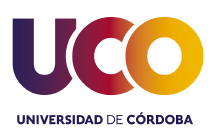The province of Cordoba
The province of Cordoba, with a population of over 750,000 inhabitants, is one of eight that make up the Autonomous Community of Andalusia. The province covers 13,723.20 square kilometres, accounting for 2.7% of the total area of Spain.
Cordoba, the capital
Demographic information
Cordoba is the third largest capital city of Andalusia with just over 300,000 inhabitants.
Geographical location
Located in the Guadalquivir River Valley, the city is bordered to the north by the Sierra Morena mountain range and to the south by the Campiña, one of the most traditional farming areas of Andalusia.
History
Cordoba is a city immersed in history. Thanks to its cultural and monumental legacy, Cordoba was designated World Heritage City by the UNESCO in 1984 and is a leading candidate for the European Capital of Culture title in 2016. A crossroads of diverse cultures throughout the city’s history, the splendour it achieved under the Romans and Visigoths grew with the arrival of the Muslims at the beginning of the 8th century when Cordoba became the capital of Al-Andalus; the largest and most developed city in the West. The Mosque, one of the most emblematic monuments of the city, was the greatest in the Western world under Muslim rule. Located on the banks of the Guadalquivir River, the Mosque houses a Christian cathedral. The nearby Jewish Quarter, where the Faculty of Philosophy and Letters is located, stands out for its narrow, winding streets.
Climate
The climate is Mediterranean and somewhat continental with hot, dry summers and cool, wet winters and an annual rainfall of about 600 m3 from October to May.
Emblematic monuments
The Mosque-Cathedral
The Mosque-Cathedral of Cordoba has been declared a World Heritage Monument by the UNESCO. It is the most important Islamic monument in the West and the third largest mosque in the world. Caliph Abd ar-Rahman I ordered the mosque to be built in AD 785 on the site of the former Visigoth basilica of San Vicente. Over the following two centuries, the mosque was enlarged under the caliphs Abd ar-Rahman II, Abd ar-Rahman III, Al-Hakam II and Al-Mansur. Visitors to the mosque can observe how the art of the Caliphate evolved throughout its construction as well as other styles such as the Gothic or Baroque architectural elements of the Christian cathedral that was erected in the interior of the monument during the reconquest of Spain by the Christians. The Mosque of Cordoba is noteworthy for its Orange Tree Courtyard (Patio de los Naranjos), its endless red and white columns topped by horseshoe arches and its beautiful mihrab.
The Alcázar de los Reyes Cristianos (Fortress of the Catholic Monarchs)
This military building was erected on the remains of a former Roman construction by order of Alfonso XI in 1328. The Alcázar served as the residence for the Catholic monarchs and it was here that they received Christopher Columbus before he set off to discover the Americas. The monument contains a fortress with a building and gardens in the Mudejar tradition as well as a valuable collection of 2nd- and 3rd-century Roman mosaics.
Calleja de las Flores
The Calleja de las Flores, or the Lane of Flowers, is one of the most widely-visited spots of the Jewish Quarter. It is a narrow, winding lane lined by balconies decorated with ornate iron grates and colourful flowers. The lane opens onto a little square with a fountain that offers one of the most beautiful views of the cathedral tower.
Medina Azahara Archaeological Site
This palatial city is located 8 km to the west of Cordoba in the foothills of the Sierra Morena mountain range. Work to build Medina Azahara began in AD 936 during the caliphate of Abd ar-Rahman III whose army of 10,000 workers was ordered to erect the most important and beautiful construction in the western world. The city stood for just 75 years when it was sacked and reduced to ruins. Excavation and restoration work on the monument began in 1910.

